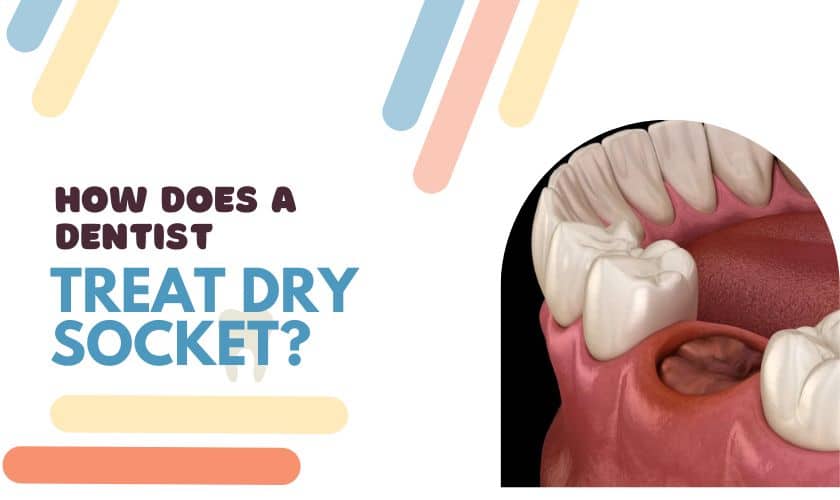A dry socket is a condition that could occur after a tooth extraction procedure is completed. It is a condition in which the blood clot is dislodged after tooth removal or when a blood clot isn’t formed. Due to the lack of proper clotting, the bones and nerves may become exposed, thus leading to the emergence of dry socket pain. The discomfort can be reduced by applying medicated gauze to the socket.
What is a dry socket?
A dry socket takes place after tooth extraction. Once the oral surgeon extracts the tooth, a blood clot is formed within the socket. A socket is a hole within which the extracted tooth was present. Because of the dislodging or not developing of the clot, the bones and nerves are exposed to the oral environment, which further creates pain and could significantly delay the healing process of the surgical site.
Who gets a dry socket?
Those who have had a recent tooth removed have the highest possibility of developing a dry socket. The extent of pain experienced in dry socket depends on the type of tooth extraction that has taken place. A dry socket is more likely to develop in those who have undergone wisdom tooth extraction. Similarly, if you have had a dry socket before, you are more likely to experience a dry socket again. Before proceeding with tooth extraction, you should let the dentist know about your dry socket history.
Diagnosis
If you feel you have a dry socket, check with a dentist who will discuss further steps after looking at the empty socket. Your dental care emergency may also recommend taking X-rays to rule out conditions other than the dry socket. It is to rule out the presence of any bone infections or the presence of root fragments in the extraction site.
Treatment for dry socket
The dry socket needs to be treated by the experienced dentist who performed the tooth extraction procedure for you. Therefore you will have to visit the same dentist once again after the completion of surgery. If you have pain, swelling, or fever associated with a dry socket, you should immediately visit the emergency dentist.
Treatment includes;
The dentist will clean the extraction site to remove any food debris stuck in the empty hole. A medicated gauze will be applied, providing immediate pain relief for the patient. The dentist will also give you instructions on cleaning and replacing the gauze at home. The dentist may prescribe over-the-counter medications to relieve the pain from dry socket.
Preventing a dry socket
- Ensure that you consult the right dentist who knows what needs to be done. To choose the right oral surgeon, check online reviews and their credentials.
- Let the emergency dental care know about your medications. It is because some medicines can prevent blood from clotting, thus leading to dry socket.
- It would be best if you also avoid smoking before and after your tooth extraction. Smoking increases the possibility of dry socket.
FAQ on dry socket
What are the complications that can develop due to a dry socket?
- Fever
- Chills
- Redness
- Swelling
- Pus or discharge from the tooth extraction site
Who is at risk of developing a dry socket?
- Those who smoke often.
- Have pre-existing conditions such as periodontal disease or gum disease.
- Those who had undergone wisdom tooth extraction.
- Those who remove the gauze from inside the mouth too early.
- Those who do not follow post-surgery instructions as mentioned by the emergency dentist.
If you think you have a dry socket or significant pain after oral surgery, you should visit the dentist who will treat the condition. Once the dry socket is completely healed, you can resume your normal activities. The healing period, however, varies from person to person.
